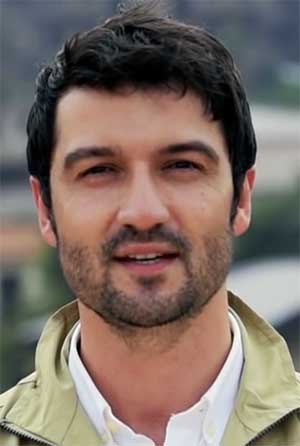One year on from the start of the Rohingya crisis, we talk to Jean-Loup Gouot, Director of HI Bangladesh about the situation on the ground:
 What emergency action is HI taking?
What emergency action is HI taking?
"Humanity & Inclusion has assisted more than 30,000 Rohingya refugees in the Kutupalong, Balukhali, Unchipranget, and Nayapara camps since September 2017.
We have provided rehabilitation care to more than 8,000 people with injuries, reduced mobility or disabilities, along with psychological support, and organised fun activities for children.
We have also distributed crutches, wheelchairs, hygiene kits, kitchen utensils, blankets, and food rations. Lastly, we have made available a fleet of 340 lorries to help store and transport humanitarian equipment for HI and other humanitarian organisations, by setting up two logistics platforms."
Have the living conditions of Rohingya refugees improved?
"More than 900,000 Rohingya are now refugees in Bangladesh. They find it difficult to access health care, food, clean water and education, and remain highly dependent on humanitarian aid. Their living conditions are also harsh.
Tensions have flared between local people and refugees over access to basic services (health care, education, etc.), and the sharing of already limited natural resources.
The situation remains critical, and though the emergency situation has stabilised, it is steadily turning into a “chronic” crisis."
What are HI's priorities now?
We aim to ensure all vulnerable people have access to rehabilitation care, psychological support and basic services (health care, etc.). And to make sure all children , disabled or not, have equal access to education.
HI assists some 30 schools, trains teachers, makes schools accessible to all (by fitting ramps, for example), and raises the awareness of families to send their children to school. This project has helped some 500 children with disabilities access an education.
Key figures: August 2018
Refugee camps where HI works: Kutupalong, Balukhali and Unchiprang Nayapara
HI has helped more than 24,000 people since the start of the crisis:
- More than 8,000 people have been given rehabilitation care
- More than 8,500 people have benefited from psychosocial support
- 1,000 mobility aids (wheelchairs, walking frames, etc.) have been handed out
- 2 aid storage centres were set up as well as a fleet of 346 trucks carrying more than 6300m3 of humanitarian equipment for HI and other organisations
- 1,000 hygiene kits (to more than 4,000 beneficiaires), 5,000 food rations (to more than 24,000 beneficiaires) and more than 900 accommodation kits have been handed out.


 What emergency action is HI taking?
What emergency action is HI taking?


